#Pool of Radiance
Explore tagged Tumblr posts
Text
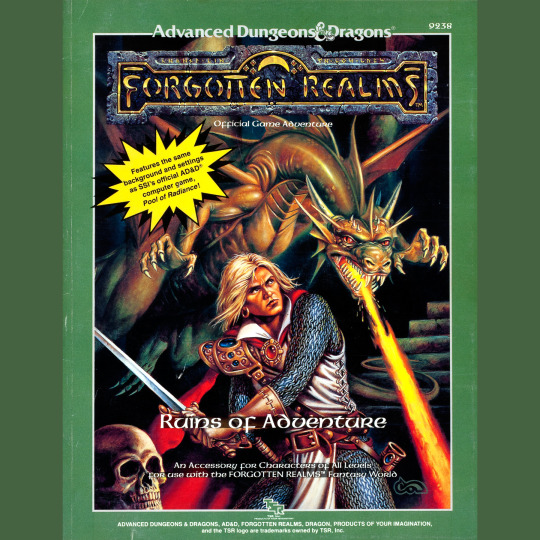
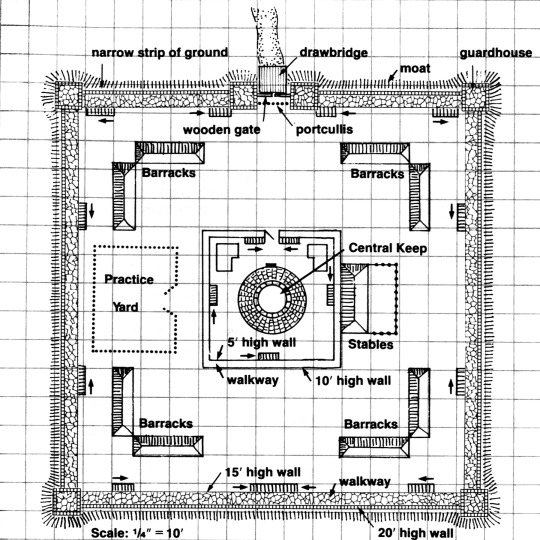
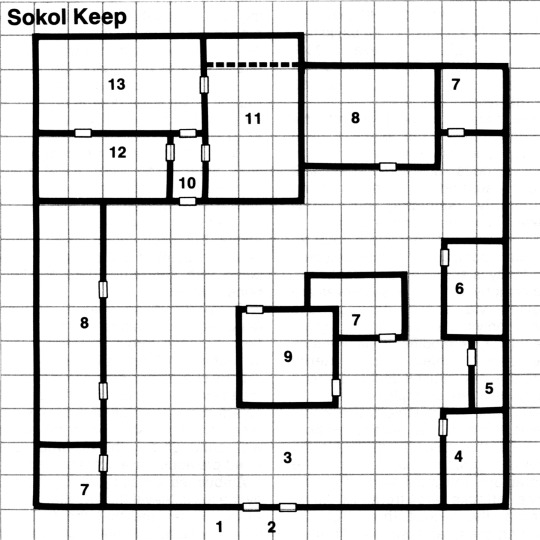
Once upon a time, SSI made a series of Dungeons & Dragons videogames collectively referred to as “Gold Box” games because their boxes were, well, gold. They were a mix of 3D exploration and top-down tactical combat with good graphics for the era (and they generally hold up pretty good today). The first, Pool of Radiance (1988), set in Forgotten Realms, was a big hit. Lots of people explored the pixelated ruins of Sokol Keep and the curiously named city of Phlan, and get warm, nostalgic memories at the mention of the name.
This is FRC1: Ruins of Adventure (1988), a squarebound D&D adventure boasting the same cover painting by Clyde Caldwell as the Pool of Radiance computer game. It sort of bills itself as a companion to the videogame, a way to translate its action to the tabletop, but apparently SSI actually fashioned the videogame out of the tabletop adventure framework (which does adhere in curious regular ways to the computing constraints of the videogame, with maps on 16x16 grids—they feel fine in the game but weirdly claustrophobic in the book). There’s a bit more in the book, too: a Zhent outpost, several lairs of monstrous humanoids I don’t remember from the game and a thri-keen settlement that definitely wasn’t there. There’s lots of background material and lore, too, of course, it being a Forgotten Realms product. And because it is such a loyal reconstruction (or progenitor), it functions as a pretty thorough tip book for the videogame too.
Is it good though? I dunno! It’s weird, for sure. It is kind of nice to see a D&D product that isn’t obviously panicking about how videogames are going to destroy the tabletop industry, at least? And it is a nice way to revisit the game without having to figure out how to make it run on a modern machine. Ruins of Adventure is a terrible name, though.
104 notes
·
View notes
Text

Forgotten Realms: Pool of Radiance: Attack on Myth Drannor Cover Art by Gerald Brom
#Dungeons & Dragons#D&D#Forgotten Realms#Toril#Faerun#Pool of Radiance#Pool of Radiance: Attack on Myth Drannor#Covers#Cover Art#Dragon#Fantasy#Art#Brom#Gerald Brom#Wizards of the Coast
51 notes
·
View notes
Text

USA 1997
#USA1997#INTERPLAY#SSI#DREAMFORGE INTERTAINMENT INC.#WESTWOOD STUDIOS#BEYOND SOFTWARE#RPG#LICENSED#DUNGEONS & DRAGONS#IBM#THE FORGOTTEN REALMS ARCHIVES#POOL OF RADIANCE#CURSE OF THE AZURE BONDS#SECRET OF THE SILVER BLADES#POOLS OF DARKNESS#EYE OF THE BEHOLDER#DUNGEON HACK#HILLSFAR#EYE OF THE BEHOLDER II THE LEGEND OF DARKMOON#EYE OF THE BEHOLDER III ASSAULT ON MYTH DRANNOR#MENZOBERRANZAN#GATEWAY TO THE SAVAGE FRONTIER#TREASURES OF THE SAVAGE FRONTIER
50 notes
·
View notes
Text
youtube
Let's Play Pool of Radiance (1988) - Part 22
This episode we finally start Pool of Radiance's Endgame! We take Stojanow Gate to get access to Valjevo Castle where the perfidious Cadorna ran to and where the Boss Tyranthraxus rules! We move into the castle, and navigate through the maze... only to get a bit lost!
The musical score in this episode was gently provided by Gorgon's Alter, taken with their permission from the album "Celestial Witchcraft".
Support independent artists and get it at Bandcamp:
Opening Music "Life" by MORSCHT, taken with their permission from the album "a sacrifice of myself unto myself".
Support independent artists and get it at Bandcamp:
https://morscht.bandcamp.com
Pool of Radiance was the first Gold Box game and the first game set in the Forgotten Realms. It used the rules of first edition Advanced Dungeons & Dragons. Find out more about the history of Dungeons and Dragons at The History of DnD Instagram, Twitter, Bluesky, Tumblr and Website!
https://www.instagram.com/thehistoryofdnd
https://twitter.com/thehistoryofdnd
https://bsky.app/profile/dndhistory.bsky.social
https://www.tumblr.com/blog/dndhistory
https://dndhistory.org/
Title Card created by Raquel studio: https://www.instagram.com/raquelg_studio/
#adnd#dnd#ttrpg#ad&d#d&d#dnd art#dungeons and dragons#dungeons & dragons#gaming#video gaming#pool of radiance#retro gaming#Youtube#Bandcamp
8 notes
·
View notes
Text
TSR DND ForgottenRealms supplement Ruins of Adventure covers the northern area of the MoonSea from the original CRPG Pool of Radiance.

#tsr#dnd#dungeons and dragons#ttrpg#rpg#coverart#dnd5e#dndart#planescape#toril#forgotten realms#waterdeep#crpg#pool of radiance
3 notes
·
View notes
Text
Quick tour of the Gold Box games (Part 1)
So, given how much time I spent on the Gold Box games lately, I wanted to share some notes on the games, maybe also some relevant bits.
Pool of Radiance
Overall style: Mega Dungeon and Sandbox.
Overland Map: Traverse on grid, random and hidden locations
Quirk: Extensive level scaling which ups the challenge, especially in the beginning.
How does it fit in the line: This is probably the hardest title until the very end of the series. You find your bearings with the engine, its quirks, how the spells work, you have to sort out effective combat tactics. And then you're set. It's a great intro to both the Gold Box line and AD&D, but it surely does not tutorialize you. At. All.
Variety: You get the feeling of visiting many varied locations, some quests/sites have a different feel, some missions bypass the focus on combat. They crammed a lot into this one. Due to the limitations of the early engine you still feel like you battled a lot of the same enemies, over and over, and in waves. Still, many challenging set piece encounters that break the mold.
Notable NPC: Cadorna the Traitor.
What I think: See this article.
What can we learn from it: Healthy mix of environments. All missions lead to the end goal, but not all derive from the same big bad. Good, explorable individual locations. How to vary the same enemies into evolving encounters that keep challenging you. And it really did a good one on backtracking - more of that would have done the series good.
What it could have done better: Give a tutorial or intro to the game, or guide you at the start. Maybe. Sometimes figuring stuff out the hard way is also very rewarding.

Curse of the Azure Bonds
Overall style: Separate locations, spanning multiple maps each (episodic).
Overland Map: Point crawl. Mid-game, additional optional locations become available to explore.
Quirk: Cameo by Elminster... if you happen to know him.
How does it fit in the line: Curse of the Azure Bonds feels like a sequel. It is not as tight as POR, nor as focused. It evolves the engine somewhat. You get a bit of a feel for the politics / conflicts south of the Moon Sea.
Variety: Yes, there are many varied locations, but to me most of them don't have much flair. Dracandros' tower and the thieves' guild / sewers at the beginning seem most memorable in terms of dungeon design. Definitely a lot more variety in enemies. It has a damn beholder - probably one of the most complex monsters in the whole line.
Notable NPC: Dragonbait, the saurial paladin whose emotions you can smell. (Nacacia, my ass!) He's on the cover, too.
What I think: COTAB feels a bit weak compared to POR. It starts a trend in Gold Box games' dungeon design - you can enter a lot of rooms in a non-linear way, but most of them feature just unrewarding combat you may skip. And you want to skip lots of it, really. Most of the game I don't remember, having played it one week ago. In POR, set piece encounter rooms often featured some reward - a clue, a story, a piece of gear, needed money and XP. You often had to do many of them, anyway, might as well tie them up in a good way. Not in COTAB - they just feel so skippable! And while you may spend your sweet time exploring optional stuff and could do the middle part in any order, the game rubs a recommended order in your face, so it narrowly escapes feeling linear after all. (The illusion wears thin but holds, I guess.)
What can we learn from it: COTAB tries its best to keep the point crawl lively by tying stories to each leg of the journey, and tries to avoid being too repetitive by making routes previously traversed safe.
What it could have done better: While it works for COTAB, the idea of "the GM can do things to me" bonds is... highly questionable. The party suffers "consequences" for things they never intended to do and had no chance to avoid - and for example gets banished from a whole country. In the context of a CRPG that's no big deal. But in your campaign, this could suck big time.

Gateway to the Savage Frontier
Overall style: Separate locations, spanning typically a single map each (episodic).
Overland Map: Huge map. And yet almost completely unused except for conveying amount of travel needed - there's only one location you visit which isn't a city and it is in the most obvious place imaginable.
Quirk: We're the heroes, and we're gonna walk into every house in town. Oh look! We surprised some spies!
How does it fit in the line: As a game Gateway seems considerably less complex, it feels almost like a tutorial to the other games. You spend considerably less time on each location, making each feel even less memorable than COTAB locations. Given the restrictions of character import/export you should play Gateway right after COTAB. Could of course be considered its own line.
Variety: Quite a bit, it reuses a lot of stuff all over. You don't spend enough time anywhere to let it bore you, anyway.
Notable NPC: Krevish, the harmless-looking fighter. He actually has quite some useful stuff to say over the course of the game.
What I think: This is the tutorial for gold box games you never got. The game is easier, features difficulty controls. It is actually fun in its own way but also rather simple - it's essentially a MacGuffin hunt with some clues, and if you fail to decipher the clues, you can traverse the map and ask a friend. A super quirky sage friend.
What can we learn from it: Gateway, by virtue of having a big map, helps us envision the sheer size of the frontier. Different regions of the map have matching encounter tables - something you quickly learn if you travel through the Troll Moors...
What it could have done better: Gateway should have utilized that map better, placing locations in the wilderness you need to look for. Instead it opted to place practically all its crawling in cities - and adding some "cities" / "dungeons" off the world map on islands. In comparison, POR's overland map was smaller and more condensed, and yet there was plenty of original content to discover, including randomly placed monster lairs. What seems bizarre are all these city maps that double as explorable dungeons, so you get attacked by barbarians or stirges on your way to the inn.

Secret of the Silver Blades
Overall style: Mega Dungeon all the way.
Overland Map: None. Instead you have a central teleport hub you can use to avoid traversing the huge ass dungeon over and over. Only Gold Box title without an overland map, and it shows.
Quirk: Enormous plot convenience with a wishing well oracle that can generate riddle answers for money and has teleporters wherever you need them to break the game into manageable chunks.
How does it fit in the line: Even at the time, I read a review of the game that was rather dismissive and biased me against it. It is, in a sense, the most linear of the games. On the other hand, it broke the mold in making all these maps that were not simple 16 x 16 grids but huge-ass sprawling and branching dungeons to explore and map out by hand.
Variety: The game sends you through a sequence of locations - ruins, mine, dungeon, glacier/frost giant village, boss castle. Each area is themed. It sticks to its themes well, and yet that makes it feel less varied, somehow.
Notable NPC: Vala, the original plate mail bikini girl. To complement her picture (eyes up here, buddy!) you get a combat icon that shows a lot of mid riff. No wonder she takes way more damage than my (overleveled) party!
What I think: This game shows the importance of imagination in early computer RPGs. It might have fared better and distracted better from its linearity if these locations featured in a modern remake in third person or 3D style. But by lacking any overland map and you returning to this village for resupplying the game feels smaller than it is. It actually took me the most time to beat due to its sheer size. And it still feels like you're nowhere, getting nowhere. They tried to break the mold on this one, but psychologically they failed. You need to manage your players' perceptions, too.
What can we learn from it: Most people probably would get bored of the same Mega Dungeon sooner or later, no matter how much variety you contrive for it. (Leaving "Diablo" aside, an entirely different gameplay experience.) It's not that they failed to try for variety, they really tried, it's just the psychology of the whole thing. Which tells us that in RPGs, the setting matters a lot. If you feel cramped into this tiny nowhere psychologically, the actual total size of the combat maps doesn't matter much. The story feels terribly local and limited through the way it is told. The game itself is massive.
What it could have done better: Lots, actually! - Combining size with lots of random encounters is rather tiresome! I kept lowering the difficulty to finish combats faster and since the manual said it lowered the likelihood of encounters. - The game treats giants as regular encounters, making you wade through hill, fire, frost, and cloud giants like they are a nuisance. By the end, even three Ancient Red Dragons at once become a mere blip on the difficulty curve. This shows us rather neatly why even AD&D 2e did a rebalancing there. If ancient dragons feel like somewhat challenging enemies, then it reduces the sense of adventure. - The game massively relies on a particular sort of enemies in mid- and end-game: Monsters with flesh-to-stone gazes. If you don't have mirrors, this is basically a save-or-die encounter and winning initiative is extremely important. If you have mirrors and equip them in time, it trivializes a lot of encounters instead. It's rather satisfying to turn a medusa to stone, though. (The Gold Box games do not consider the penalties, I think, for fighting while averting your gaze.) Most sought item in the game: Reflective magic silver shield - total: 1. Save-or-die needed to go away and won't be missed. 5e does this much better. - Iron golems suck big time.
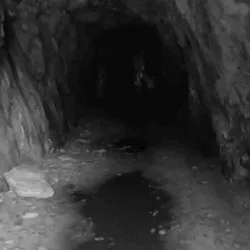
#gold box games#gold box#AD&D#advanced dungeons & dragons#computer rpg#crpg#pool of radiance#curse of the azure bonds#gateway to the savage frontier#secret of the silver blades
0 notes
Text
Read Pool of Radiance this week and it head-hops SO much but honestly? Either its really well-done or sometimes it just doesn't matter.
Tbf ot headhopped ALL the time and VERY consistently it wasn't just. One random slip-up here or there like it WAS obviously on purpose but like. You can totally do it ig.
Reading weird poetry and short stories and unapologetically strange novels really does teach you that a lot of stuff people teach you about writing is just not true. Almost anything someone tells you must happen when you’re writing has an exception and writing advice has trends and fads just like anything else.
I was struggling to find where I fit as a writer until I found writers like Daniel Olivias who wrote short stories in ways I’d never seen before. I owe a lot of my current inspiration in my writing to Latin American magical realism writers. Finding magical realism and surrealism really opened doors in my brain that had been shut before.
You can get weird with it. You can get weird in content, weird in form, weird in structure. You don’t need a plot. You can tell a story backwards, you can just sit in an idea, you can explain, overexplain, skip explanation, get political, start ideas, end ideas. No ifs ands or buts you can just throw traditional story structure out the window.
I know what kind of writer I am now. A weird one. You don’t have to be held to standards of predictability, genre fiction, markets, tropes. You can just do whatever. Truly. Honestly. Completely. For ten words or a hundred thousand.
719 notes
·
View notes
Text

you have 0 pp
#ramblings#dnd#dungeons and dragons#pool of radiance#game is pool of radiance#controls are atrocious#but it’s from the 80s#so it gets a pass
1 note
·
View note
Text
Through the Moongate 18 - Ultima V: Warriors of Destiny
Through the Moongate 18 - Ultima V: Warriors of Destiny This episode covers the development and release of "Ultima 5" across various platforms.
Subscribe on Zencastr | Subscribe on iTunes | Subscribe on Google Play | Subscribe on Spotify | Subscribe on TuneIn | Subscribe on Stitcher Podcast Topic(s) Andrea Contato’sThrough the Moongate, per its Kickstarter page, “illuminates the path of the Ultima games’ history and the creative people behind this landmark series. It also covers some of Origin’s other games, especially Wing Commander,…
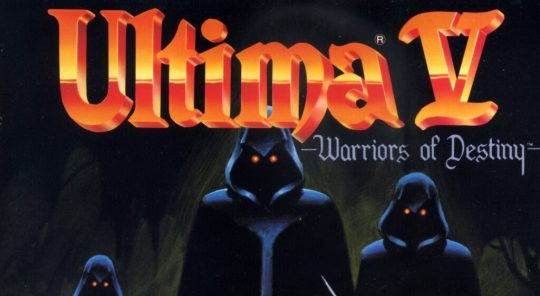
View On WordPress
#Andrea Contato#Apple ][#Atari 800#Chris Roberts#Commodore 128#Commodore 64#David Shapiro#Dr. Cat#Dungeon Master#EA#Electronic Arts#John Miles#Jon Romero#Ken Arnold#Massachusetts#Might & Magic#Mockingboard#Moebius#Origin Systems#Pool of Radiance#Richard Garriott#Robert Garriott#Spam Spam Spam Humbug#Texas#The Bard’s Tale#Through the Moongate#Times of Lore#Ultima 1#Ultima 4#Ultima 5
0 notes
Text
Is anybody else occasionally weirded out by the lack of day-night cycle in BG3? I'm not complaining: it doesn't matter in the slightest, but the fact that time doesn't pass/there's no option to wander around the map in the dark just feels weird in some way. Maybe I'm just used to having them in games.
#I think BG3 is the only FR crpg that lacks it (except maybe really old stuff like Pool of Radiance that I never played?)#Have to do my Act 3 assassination work in broad daylight... ruining the vibes a touch. At least give me some rain?#babbling#playthrough shenanigans
29 notes
·
View notes
Text
Radiance in white 🤍 !.
#Splendor#Beautiful#Magic#Radiance#downfalldestiny#downfall#life#islamic#islamic architecture#A#Traditional#White house#magic destinations#magical world#beautiful places#Piscine#Pool#Algeria#Morroco#Tunisia#Ya rayeh
50 notes
·
View notes
Text




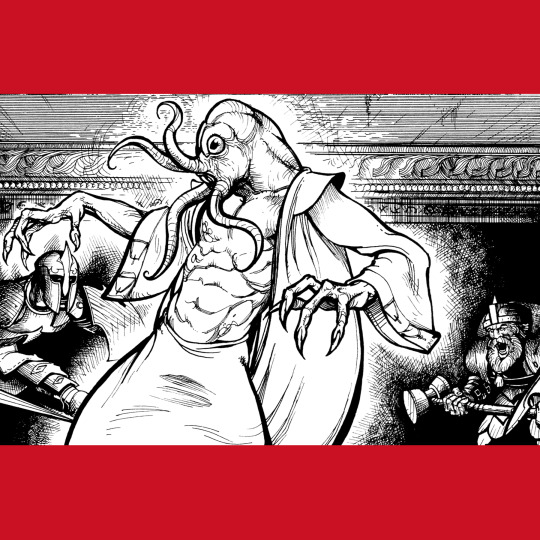


The multimedia extravaganza mostly dried up after Azure Bonds. The next SSI game got a tie-in novel, but no adventure book. TSR pretty much ignored SSI after that. In 1994, TSR opted to not renew SSI’s license. Black Isle made some notable D&D videogames, and then, for some reason, came Pool of Radiance: Ruins of Myth Drannor (2001), from Stormfront Studios (who had previously worked on the AOL Neverwinter Nights and the SSI Savage Frontier games). It wasn’t as bad as Temple of Elemental Evil (2003, and totally unplayable), but it was close.
Tie-in novels had been back for a little while, based on the strength of the Baldur’s Gate games’ popularity, so no surprise about this videogame also getting a novel. However, it also, briefly marked the return of the weird tabletop companion book, perhaps because the videogame was the first full digital implementation of the 3E rules (probably to its detriment, as it had been developed as a 2E game and been converted mid-development).
Anyway, Pool of Radiance: Attack on Myth Drannor (2001), exists, one of the not very common soft cover 3E books. Novelty: it ties into the videogame, rather than re-enacting it. The plot centers on the machinations of the Cult of the Dragon and their attempt to use a pool of radiance to empower one of their dracolichs. It seems mostly OK, but veers into some truly weird shit, like the naked man and the deepspawn living in weird symbiosis? I dunno, there are some mysteries I refuse to investigate, even for you, dear readers. A box of text at the end explains that the characters in the videogame destroy the body of the dracolich, but the heroes of the tabletop have the chance to destroy its phylactery and make victory permanent. Seems like a lot of work, honestly. Let the dracolich be free to eat garbage and do crimes, I say.
The art is nice, at least. Ted Beargeon and Vince Locke inside, a nice Brom on the cover.
82 notes
·
View notes
Note
Hey there captain! o7
Just wanted to ask if u had any further info for your hollow knight oc (or basically just you as a hollow knight character)? :0
I'm mostly just curious! I kept wondering if they would be a passive character or attack the Knight like the rest of the enemies? Or a bit of both?
I got rather excited to see u have an interest in hollow knight, Your design for your sona is really good and fits in nicely with all the other characters!!
ello there! o7
i've liked hollow knight for a while now actually!! huge fan of the art and game in general, i just never found the occasion to chat about it on here lol. lil guys in masks is kinda my thing, so of course i love em.
thaaaat said, i'm not sure if/how my little bee character would fit into the lore. i think my bee guy would be passive. depending on how much time passed, i can imagine them trying to travel in search of a possible cure for the infection.
if i had to spitball though, i'd say they first set off in a bid to try and cure the members of their hive—not sure if it'd be the same hive or a different one from the one that exists in the game–that were effected by the radiance. since bees don't have the signature glowing orange eyes or anything, the first time one of them went rogue must've been really shocking.
whatever it was, i imagine that they had their own little crew that they strove to protect the whole time. maybe they went as a group, maybe they stayed back at the hive, but either way they probably got captain as a nickname instead of a title.
if it is the same hive as the game, it would be both interesting and tragic if the knight encountered my character out in the wild, kind of like you do with quirrel. a little flavor text here and there would get you the info that they're searching for a way to help their hive and crew. they probably don't know that everyone else is infected, or that the queen is dead. (or if they do, they're deeply in denial about it.)
also they don't take the mask off, and the little lines along the bottom are carved in. ("Why do I wear a mask? Little knight, there are some questions you will not find answers for, whether it be for your own sake or the sake of others. My face is of little consequence, to my mission or yours.")
#ney's chatter (ask answers)#i could have made this more in depth and angsty but#i think part of why i love hollow knight so much is the like. subtle aspects of tragedy in walking along the dead world#it's beautiful and has so much story to tell#but so many people who are no longer able to tell it#the radiance infected them and took away aspects of what they were#but the rain still falls. the benches survive. there are still quiet pools of water and waterfalls.#i love hollow knight man i gotta do more for hollow knight
21 notes
·
View notes
Text
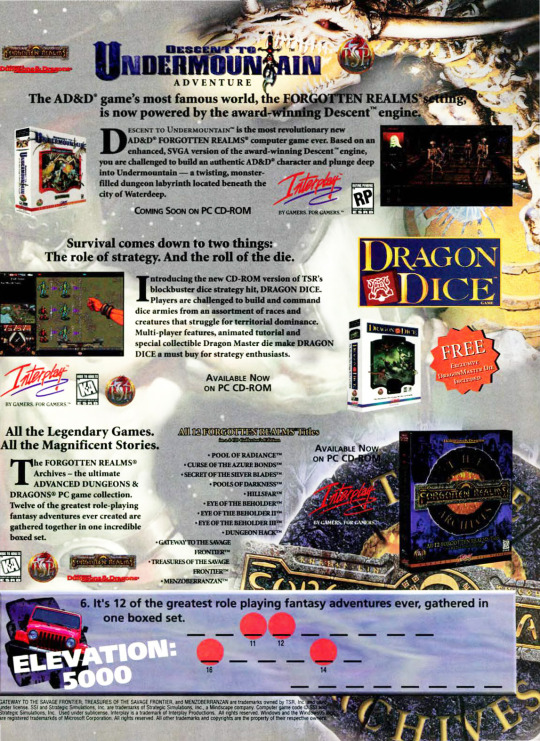
USA 1997
#USA1997#INTERPLAY#SSI#WESTWOOD STUDIOS#RPG#ACTION#STRATEGY#DUNGEONS & DRAGONS#IBM#MACINTOSH#DRAGON DICE#DESCENT TO UNDERMOUNTAIN#THE FORGOTTEN REALMS ARCHIVES#POOL OF RADIANCE#CURSE OF THE AZURE BONDS#SECRET OF THE SILVERBLADES#HILLSFAR#POOLS OF DARKNESS#EYE OF THE BEHOLDER#DUNGEON HACK#EYE OF THE BEHOLDER II THE LEGEND OF DARKMOON#EYE OF THE BEHOLDER III ASSAULT ON MYTH DRANNOR
22 notes
·
View notes
Text
Let's Play Pool of Radiance (1988) - Part 19
youtube
This week I manage to fail at pressing record for a whole mission to Zenthil Keep! However, I do manage to press record in time for a rematch at the Kobold Caves and we finally get that done! Expect a long series of battles, as we survive by the skin of our teeth!
The musical score in this episode was gently provided by Old Moth Dreams, taken with their permission from the album "Winter Ghost Tales".
Support independent artists and get it at Bandcamp:
Opening Music "Life" by MORSCHT, taken with their permission from the album "a sacrifice of myself unto myself".
Support independent artists and get it at Bandcamp:
https://morscht.bandcamp.com
Pool of Radiance was the first Gold Box game and the first game set in the Forgotten Realms. It used the rules of first edition Advanced Dungeons & Dragons. Find out more about the history of Dungeons and Dragons at The History of DnD Instagram, Twitter, Bluesky, Tumblr and Website!
https://www.instagram.com/thehistoryofdnd https://twitter.com/thehistoryofdnd
https://bsky.app/profile/dndhistory.bsky.social
https://www.tumblr.com/blog/dndhistory
https://dndhistory.org/
Title Card created by Raquel studio: https://www.instagram.com/raquelg_studio/
#adnd#dnd#ttrpg#ad&d#d&d#dnd art#dungeons and dragons#dungeons & dragons#gaming#retro gaming#pool of radiance#80s gaming#Youtube#Bandcamp
6 notes
·
View notes
Text
great news everyone i found old notes for a fic that i thought i had lost what if i just abandon everything and rotate super obscure characters in my brain for a few weeks
#what if i pause in my kenobi reread to go reread pools of radiance and then outline my sequel fic#just to rotate them in my brain and maybe write a few drabbles#this book has no fics on ao3 it is for a fandom of ME and who i was as an 11 year old
2 notes
·
View notes